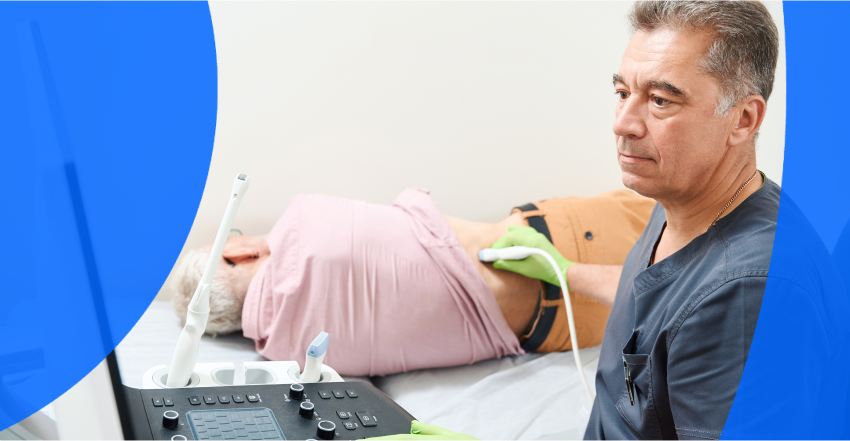Preparing for an MRI: What to Wear, What to Avoid and Other Tips
July 25, 2024
Read More
Noticing a little pink in your urine? It’s time to speak to your doctor. Blood in urine, pain upon urination and obstructed or delayed urine flow could be a sign of damage, inflammation or infection to your urinary tract. To confirm, your doctor may refer you for a renal ultrasound.
If you have an upcoming renal ultrasound appointment, you may have questions about the procedure or feel apprehensive about the results. This article breaks down:
A renal ultrasound is a safe and non-invasive scan that examines the structures of the kidney, ureters (tubes that connect the kidneys to the bladder) and bladder to diagnose any urinary tract conditions. During your appointment, an ultrasound technician will pass a hand-held device called a transducer over a small area of your body, allowing high-frequency sound waves to travel painlessly through your body. An ultrasound machine then detects the sound waves and uses them to create flat, 2D images of your kidneys and other soft-tissue areas nearby, like your ureters and bladder.
Both kidney and renal ultrasounds capture the structure of the kidneys, but a renal ultrasound explores further by capturing the soft-tissue structures of the ureters and bladder.
Your physician may refer you for a renal ultrasound if you’re experiencing specific symptoms or have an injury in that area of your body. Symptoms or conditions that may require a renal ultrasound include:
When your renal ultrasound appointment begins, the attending ultrasound technician will ask you to lay face-up on an exam table and expose your abdomen area. Since a renal ultrasound is an external ultrasound, the technician will apply a water-based gel to your skin before running the transducer through it. They will then move the device over your abdomen and sides, pausing every few seconds to capture images.
The technician may ask you to reposition yourself to allow for clearer images from the side, but the entire procedure usually takes no longer than half an hour. In some cases, your doctor may request that the ultrasound explore a blockage between your kidneys and bladder. In this case, you’ll be asked to begin the ultrasound with a full bladder but to take a quick moment to visit the washroom to empty your bladder before continuing.
A renal ultrasound is a quick and painless procedure, but there are some things you can do to prepare for your appointment ahead of time, such as:
Keep in mind that your ultrasound technician is not able to answer any questions about what they see during your ultrasound and they cannot give you medical guidance. But you may want to ask the technician other questions during your appointment, like:
In Canada and the U.S., it’s illegal for your ultrasound technician to discuss what they see during imaging or your results. This means you’ll have to wait for your follow-up appointment with your referring physician before you can gain a medical opinion about your renal ultrasound.
During your follow-up appointment, you can ask your doctor any questions you have about your ultrasound results, including:
If you have your own copy of your renal ultrasound images and report, you’ll be able to review what your doctor describes and request confirmation about what you can see.
It can be nerve-wracking waiting for the follow-up appointment to discuss your renal ultrasound results, but you may not have to wait as long as you think. With PocketHealth you can quickly and easily access your images and results as soon as the radiologist finishes their report, often before your follow-up appointment. You can also securely store and share your results directly from your device, making it easy to get a second opinion. Access your records here.
Medical reports can be difficult to understand without training. Your ultrasound report will likely contain complex medical terminology, but PocketHealth Report Reader can help. Report Reader provides definitions for the medical terms in your report and spotlights any follow-up recommendations so you can feel informed and confident when speaking to your doctor at your next appointment.
If your doctor has referred you for a renal ultrasound, you now understand the procedure and your results, including what a renal ultrasound can detect, what questions to ask during and after your appointment and how you can access your results.
Using PocketHealth to access and review your renal ultrasound results before your follow-up appointment can help you prepare questions and feel confident discussing the results with your referring physician. Understanding the terminology and results outlined in your report using PocketHealth Report Reader also helps you become a more informed participant, rather than a passenger, in your healthcare journey.
Learn more about how to use PocketHealth to access and share your renal ultrasound results.